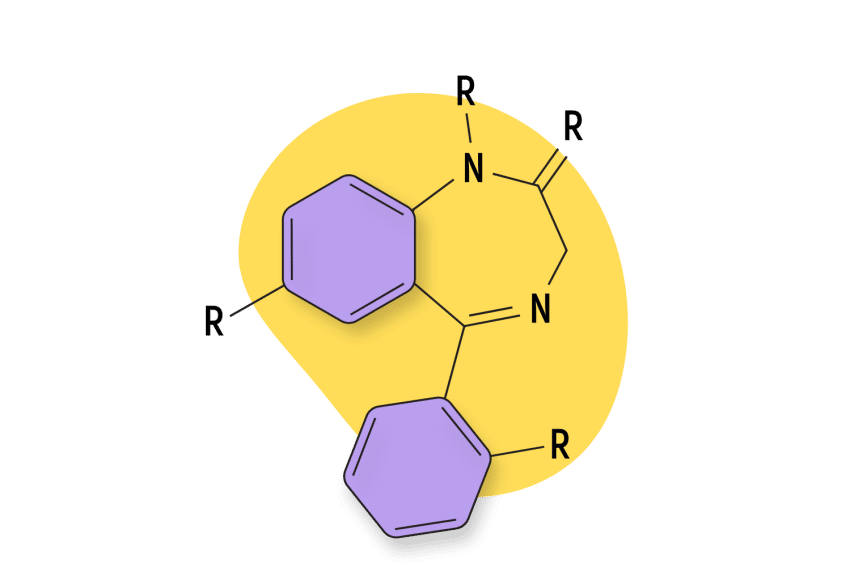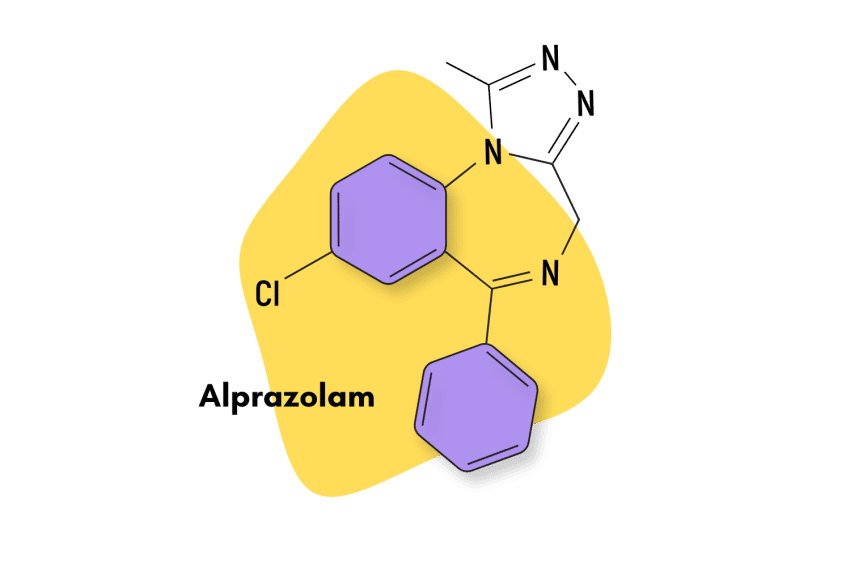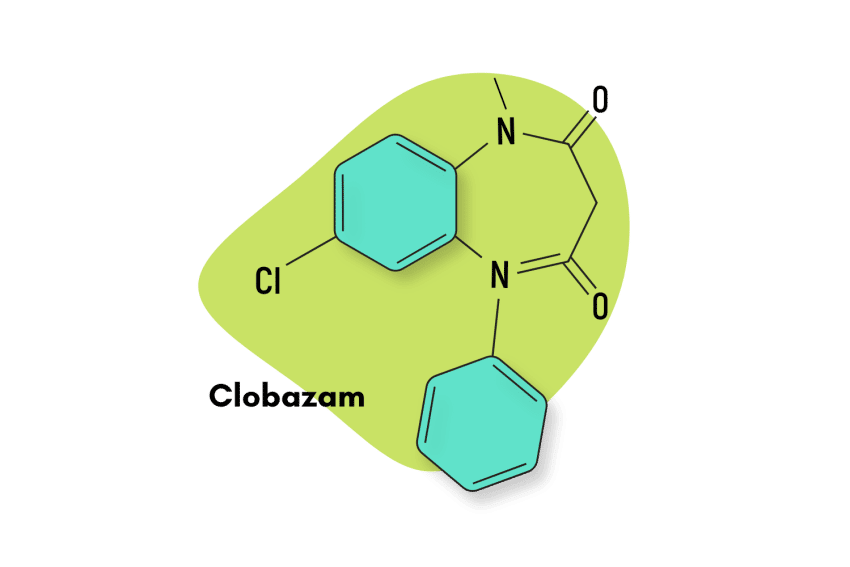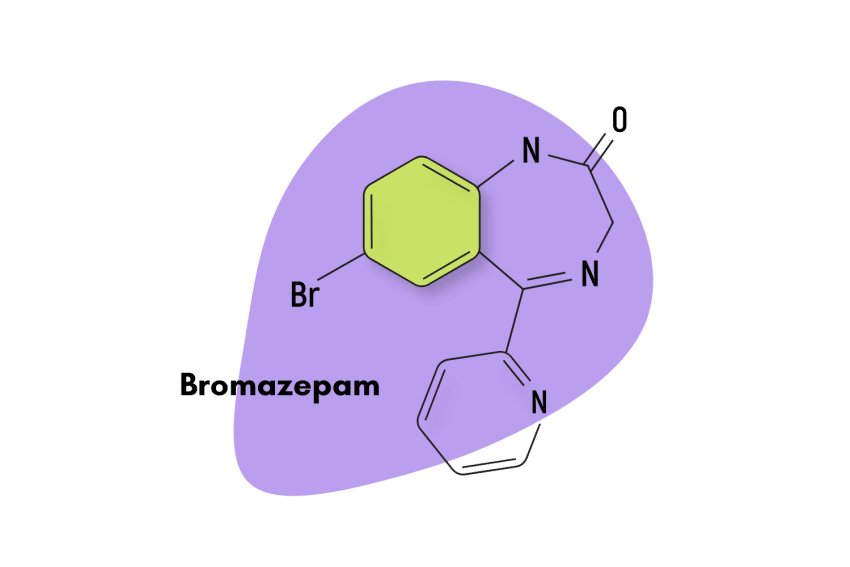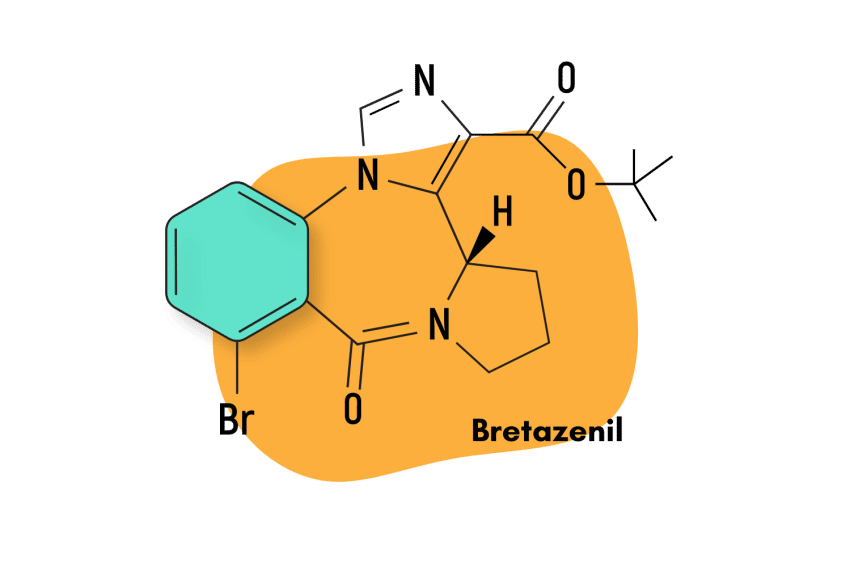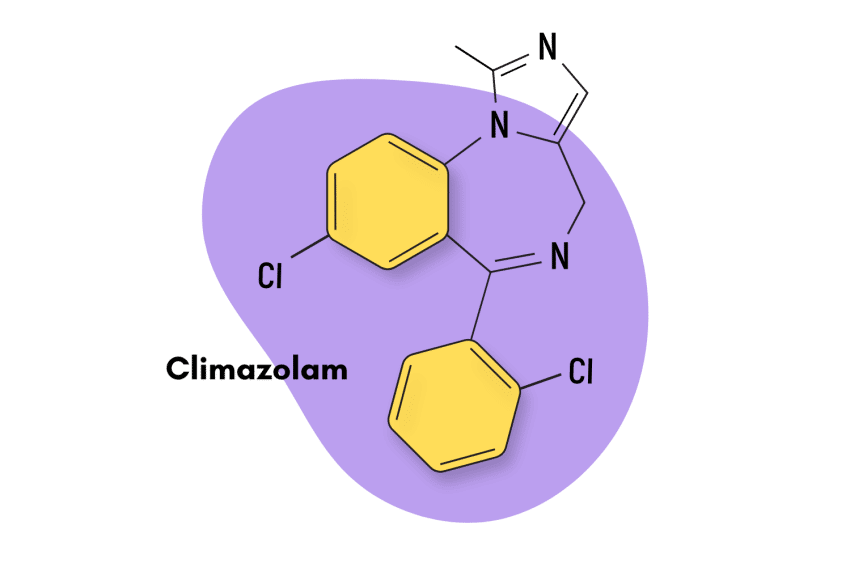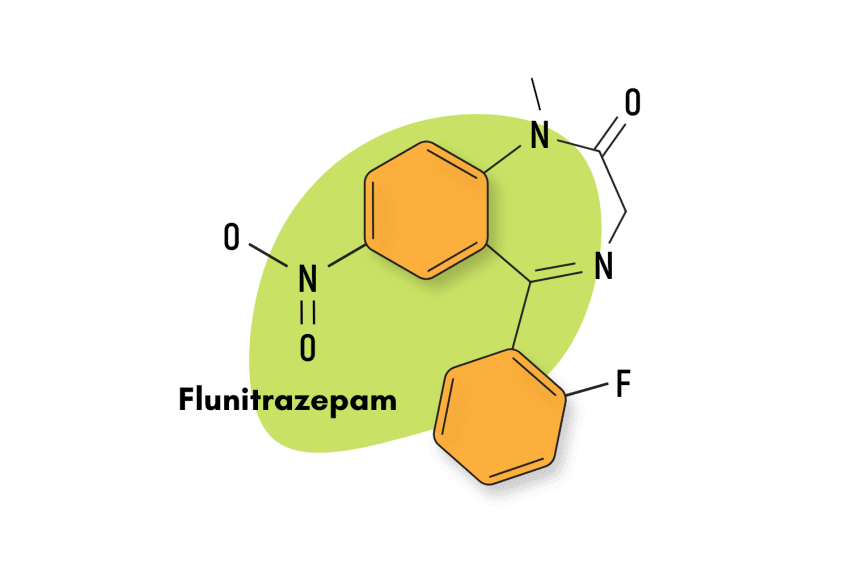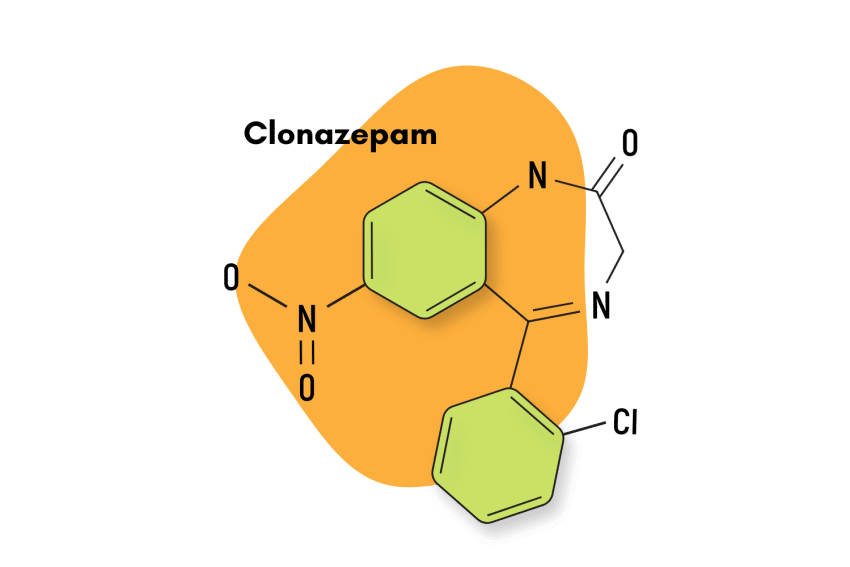Clorazepate (Tranxene) Fact Sheet & Harm Reduction Guide
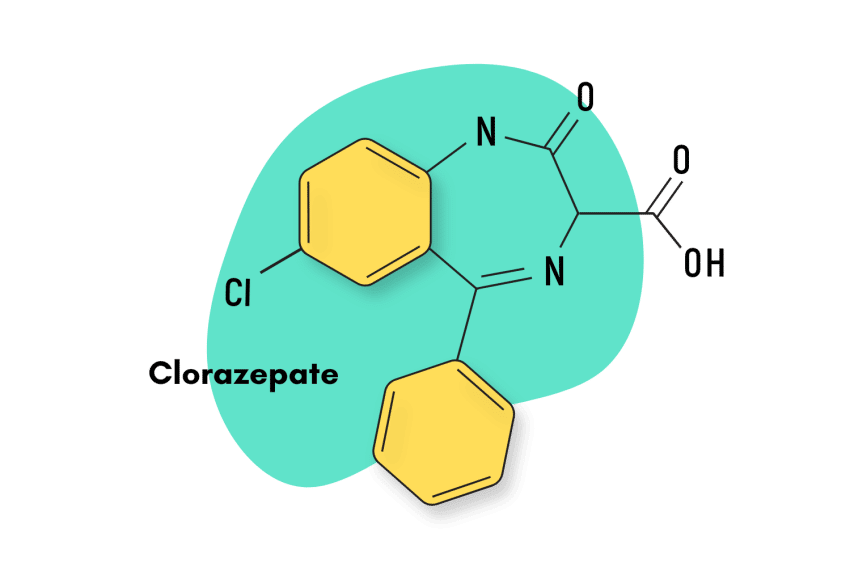
Clorazepate — known commercially as Tranxene, Tranxilium, and Novo-Clopate — is a classical 1,4-benzodiazepine, with close similarities to diazepam (Valium) and clonazepam (Klonopin).
In terms of its properties, clorazepate is an unusually long-acting compound (32-152 hours) and metabolizes into another pharmacologically active byproduct, nordiazepam. Nordiazepam also has a considerably long elimination-half life.
Regarding potency, clorazepate is slightly less potent than average, with 13 mg being roughly equal to 10 mg of diazepam.
The FDA has approved Clorazepate (Tranxene) for the following indications:
- For the management of anxiety disorders or the short-term relief of anxiety symptoms.
- As adjunctive therapy in managing partial seizures (physicians should periodically reassess the drug’s usefulness for the individual patient).
- For the symptomatic relief of acute alcohol withdrawal
Clorazepate Specs
| Status | Approved 💊 |
| Common Dosage | 10-20 mg |
| PubChem ID | 2809 |
| CAS# | 23887-31-2 |
IUPAC Name
7-chloro-2-oxo-5-phenyl-1,3-dihydro-1,4-benzodiazepine-3-carboxylic acid
Other Names
Tranxene, Gen-Xene, Tranxilium, Novo-Clopate
Metabolism
When taken orally, clorazepate dipotassium is rapidly decarboxylated to form nordiazepam to the point that there is essentially no circulating parent drug. Nordiazepam, the primary metabolite, forms quickly and has a half-life of 40 to 50 hours. Nordiazepam is further metabolized by hydroxylation into oxazepam, which has a 5-6 hour elimination half-life.
Duration of Effects
Clorazepate’s elimination half-life is 32-152 hours, while that of nordiazepam, its primary active metabolite, ranges from 36-200 hours. Finally, oxazepam, the most active metabolite of nordiazepam’s byproducts, has an elimination half-life of around five to six hours.
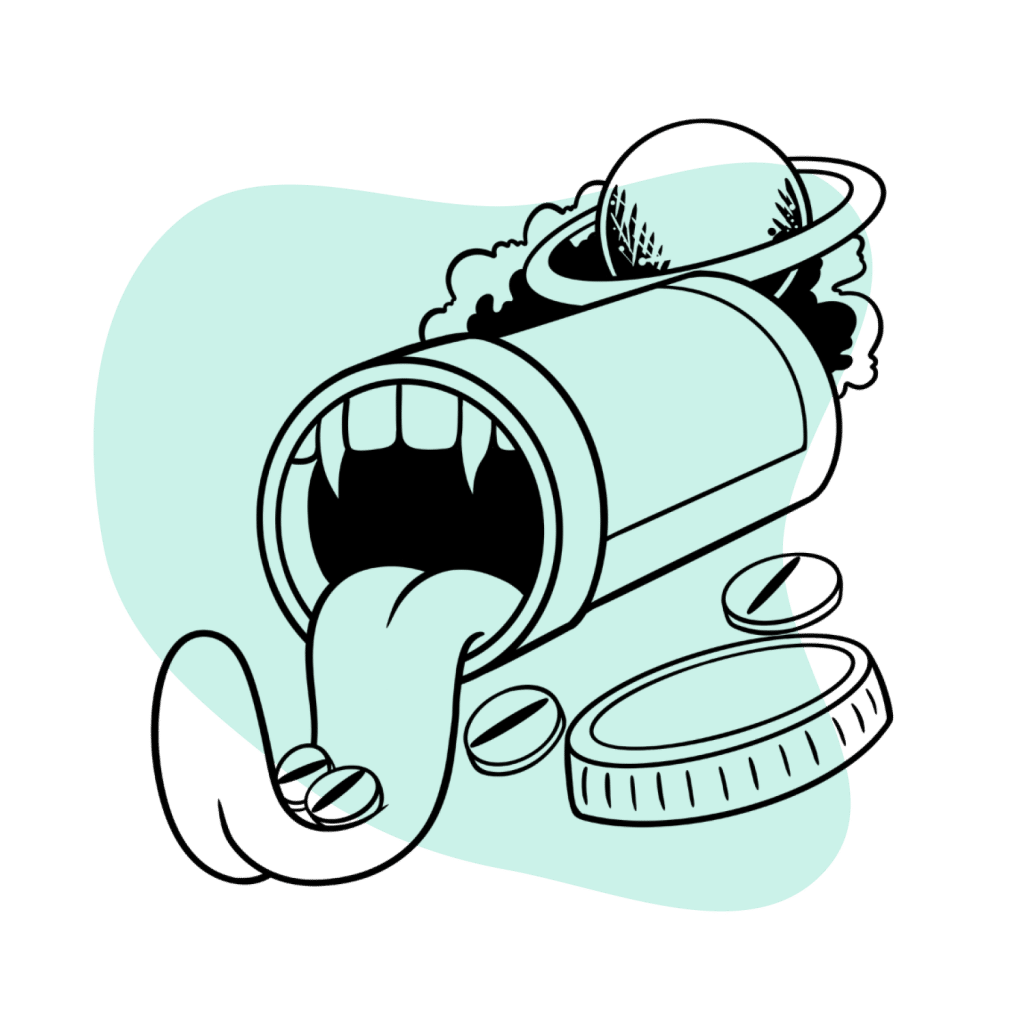
Benzodiazepine Dosage Equivalency Calculator
**Caution:** Benzodiazepines have a narrow therapeutic window. Dose equivalents may not be accurate in higher doses.
This calculator does not substitute for clinical experience and is meant to serve only as a reference for determining oral benzodiazepine equivalence.
Please consult a medical practitioner before taking benzodiazepines.
How Does Clorazepate Work?
Clorazepate’s primary mechanism of action has been identified as the “classical” GABA-mediated pathways common to the vast majority of benzodiazepines. This pathway relies on the ability of benzodiazepine molecules to bind to GABA-A receptor sites and produce an allosteric effect, potentiating the GABA receptor’s natural ability to inhibit the functioning of the brain and central nervous system.
Chemically speaking, this effect is accomplished because the allosteric effect increases the opening frequency of the chloride ion channel of GABA-A receptors. This allows for the passage of negatively charged chloride ions into the membrane and produces hyperpolarization.
In this hyperpolarized state, the neurons are less likely to fire off an action potential, the electrical signals used by the body to communicate, which, in turn, leads to overall inhibition and the range of pharmacological effects associated with benzodiazepines.
Clorazepate Specifics
However, there are meaningful characteristics specific to clorazepate that substantially influence its pharmacology and the situations it is clinically suited.
The most significant is that it’s soluble in water. This unusual property among benzodiazepines is thought to improve bioavailability and reduce passage across the blood-brain barrier [1].
Another key characteristic is clorazepate’s status as a prodrug for nordiazepam. The majority of clorazepate’s pharmacological effects come as a result of its conversion into nordiazepam. This metabolic transformation occurs in the gastrointestinal tract and occurs quite rapidly, with peak plasma levels of nordiazepam appearing between 30 to 2 hours after the initial administration of clorazepate [2].
Additionally, in contrast to most benzodiazepines, nordiazepam is a partial rather than a full agonist. Partial agonists have a lower intrinsic activity at receptor sites than full agonists and, generally, can be said to elicit less potent effects and fewer side effects because of this. This particularity makes them better suited for particular clinical situations over full agonists.
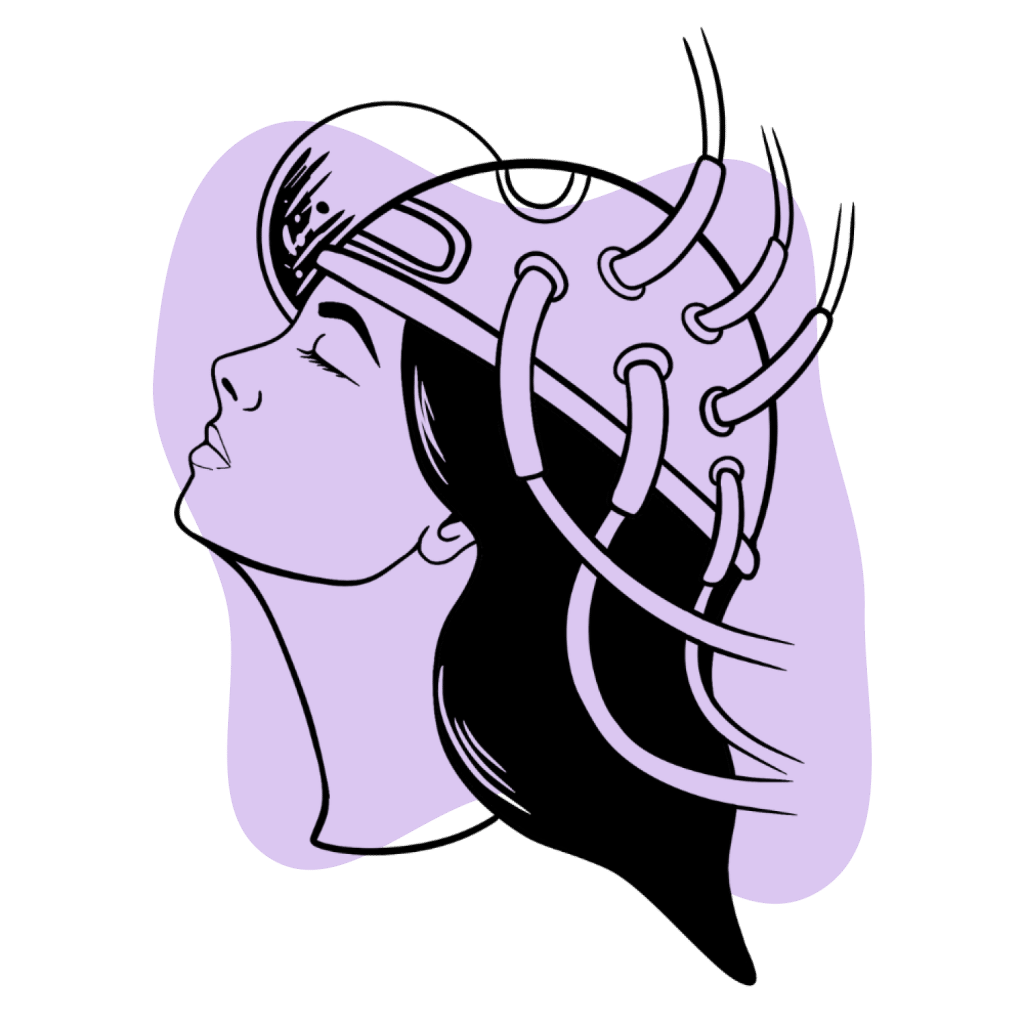
Is Clorazepate Safe? Risks & Side Effects
Clorazepate is listed under the Controlled Substances Act (CSA) as a Schedule IV compound. This entails that the clorazepate has recognized medical uses but also carries with it the potential for misuse and the development of dependence and withdrawal symptoms.
In general, benzodiazepines, when used in strict accordance with the instructions of a given prescription, are relatively safe in that they generally do not cause severe health events or fatalities. However, the reality of the situation is more complicated than their classification under the CSA might suggest.
When misuse is factored into the equation, the risk level of benzodiazepines rises considerably. One only needs to look at the consequences of the explosion in poly-drug abuse in the United States in recent years to confirm this.
The opioid crisis has led to many concurrent opioid and benzodiazepine use, resulting in many fatalities. For example, a 2020 study by the CDC discovered that, in that year, benzodiazepines were involved in a total of 12.290 deaths in the United States.
The Schedule IV designation is given to the vast majority of benzodiazepines and, as such, does not help assess the individual risk level of a given benzodiazepine.
When it comes to clorazepate, the lower potency, combined with the fact that nordiazepam is only a partial agonist, means there is less cause for concern. However, the compound’s long elimination half-life is a double-edged sword. A long half-life is less conducive to the formation of bad habits, but, at the same time, it has been reported that repeated administration leads to accumulation and the increase of nordiazepam plasma levels over time [3]. Accumulation is known to lead to an increased rate of adverse effects.
Side Effects of Clorazepate
According to the FDA, the following side effects are associated with clorazepate includes:
- Anterograde amnesia
- Ataxia
- Blurred vision
- Decrease in systolic blood pressure
- Depression
- Depression
- Diplopia
- Dizziness
- Drowsiness
- Dry mouth
- Falls (mainly in the elderly)
- Fatigue
- Genitourinary complaints
- Headache
- Insomnia
- Irritability
- Mental confusion
- Nervousness
- Slurred speech
- Suicidal behavior or ideation
- Transient skin rashes
- Tremors
- Various gastrointestinal disturbances
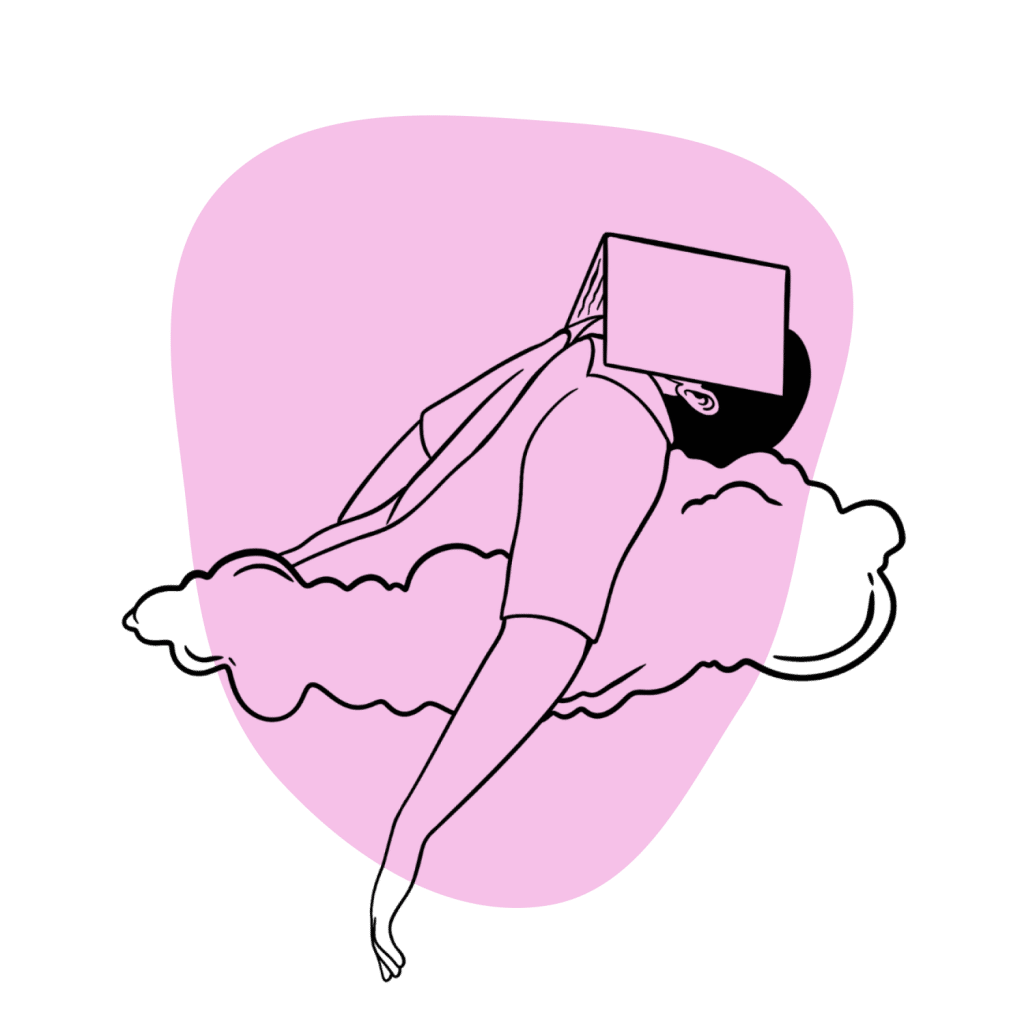
Benzodiazepine Withdrawal & Dependence
Clorazepate, and benzodiazepines in general, has been strongly associated with forming physical dependence and withdrawal symptoms stemming from continued therapeutic or recreational use.
In the earlier years of benzodiazepines, doctors were unaware of this risk and tended to overprescribe benzodiazepines as a result. Nowadays, it is standard practice for doctors to hedge against this risk as much as they can without meaningfully compromising the effectiveness of treatment. Indeed, some benzodiazepines are so adept at causing physical dependence that no more than seven to 10 days of consecutive use are recommended.
To avoid the risk of withdrawal symptoms, which can be quite severe when it comes to benzodiazepines, the sudden cessation of treatment is not recommended. Doctors usually get patients off benzodiazepines through gradual tapering (dosage reduction).
Harm Reduction: Clorazepate
The use of prescription drugs will always have significant associated risks, and, as such, patients should arm themselves with as much harm reduction knowledge as possible. This will ensure that patients always can make choices that will reduce their risk levels.
With the assumption that a user is not looking to use benzodiazepines recreationally, there are two main harm-reduction recommendations for them to follow. First of all: avoid misuse as much as you can. This means sticking to your doctor’s instructions as strictly as possible. Taking your prescription at the wrong time or altering your dosage —even slightly —is still considered misuse.
And second, patients should always look to reduce their benzodiazepine treatment in terms of dosage (quantity) and duration. These two factors are the most meaningful when it comes to the formation of dependence and thus should be limited as soon as possible. Prolonged use of benzodiazepines at a significant dosage will almost inevitably result in physical dependence.
Benzodiazepine Harm Reduction Tips:
- 🥣 Don’t mix — Mixing benzodiazepines with other depressants (alcohol, GHB, phenibut, barbiturates, opiates) can be fatal.
- ⏳ Take frequent breaks or plan for a short treatment span — Benzodiazepines can form dependence quickly, so it’s important to stop using the drug periodically.
- 🥄 Always stick to the proper dose — The dosage of benzos can vary substantially. Some drugs require 20 or 30 mg; others can be fatal in doses as low as 3 mg.
- 💊 Be aware of contraindications — Benzodiazepines are significantly more dangerous in older people or those with certain medical conditions.
- 🧪 Test your drugs — If ordering benzos from unregistered vendors (online or street vendors), order a benzo test kit to ensure your pills contain what you think they do.
- 💉 Never snort or inject benzos — Not only does this provide no advantage, but it’s also extremely dangerous. Benzos should be taken orally.
- 🌧 Recognize the signs of addiction — Early warning signs are feeling like you’re not “yourself” without the drug or hiding your habits from loved ones.
- ⚖️ Understand the laws where you live — In most parts of the world, benzodiazepines are only considered legal if given a prescription by a medical doctor.
- 📞 Know where to go if you need help — Help is available for benzodiazepine addiction; you just have to ask for it. Look up “addiction hotline” for more information where you live. (USA: 1-800-662-4357; Canada: 1-866-585-0445; UK: 0300-999-1212).
Clorazepate Drug Interactions
Benzodiazepines all act to depress the CNS, which means that there is a significant risk when they are used concomitantly with other compounds that have this quality, like, for example, opioids, alcohol, and barbiturates. It is extremely important to ward against this possibility since inhibition of the CNS can easily lead to respiratory depression, the leading cause of death among drug overdoses.
Other, more esoteric, drug interactions could also be contraindicated for any given prescription drug. Patients should always disclose all drugs they commonly ingest to their prescribing doctor.
Finally, if a prescription drug’s metabolism is mediated by the enzymes that make up the CYP family, then the user has to be cognizant of the fact that other compounds, and even foodstuffs, could affect that enzyme and thus alter the proper metabolization of the drug.

Clorazepate Contraindications
Clorazepate is contraindicated for the following conditions and/or factors:
- Bronchitis
- Chronic obstructive pulmonary disease (COPD)
- Conjunctive use of barbiturates, opiates, or those suffering from alcoholism
- Intellectual disabilities due to frequent paradoxical reactions
- Major depression
- Myasthenia gravis
- Over the age of 65 (high risk)
- Personality disorders
- Sleep apnea
As a class of drugs, benzodiazepines share common contraindications, so it’s normal to see this list for almost all commercially available benzodiazepines.
Clorazepate Dosage
According to the Mayo Clinic, the dosage for clorazepate (oral tablets) can be found below.
For anxiety
| Age group | Dosage recommendations |
| 🧑🏻 Adults | 30 milligrams (mg) per day, taken in divided doses. Your doctor may adjust your dose if needed. |
| 👨🏽🦳 Older adults | At first, 7.5 to 15 mg daily at bedtime or in divided doses. Your doctor may increase your dose if needed. |
| 🧒🏼 Children | Your doctor must determine the use and dose. |
For alcohol withdrawal symptoms
| Age group | Dosage recommendations |
| 🧑🏻 Adults | Initially, 30 milligrams (mg), followed by 30 to 60 mg in divided doses. Your doctor will set up a schedule to gradually adjust your dose until your symptoms improve. The dose is usually not more than 90 mg per day. |
| 🧒🏼Children | Your doctor must determine the use and dose. |
For partial seizures:
| Age group | Dosage recommendations |
| 🧑🏻 Adults and children 13 years of age and older | At first, 7.5 milligrams (mg) 3 times a day. Your doctor may increase your dose as needed. However, the dose is usually not more than 90 mg per day. |
| 🧑🏽🦱 Children, 9 to 12 years of age | The starting dose is up to 7.5 mg 2 times a day. Your doctor may increase your dose as needed. However, the dose is usually not more than 60 mg per day. |
| 🧒🏼 Children up to 9 years of age | Use is not recommended. |
Similar Benzodiazepines
There are dozens of commercially available benzodiazepines on the market, so users should know what other options are available to them.
Diazepam
Diazepam is another long-acting “classical” benzodiazepine and has comparable pharmacology to clorazepate, as evidenced by their similar clinical indications. And in metabolic terms, diazepam is also a prodrug for nordiazepam, so after they have been metabolized, both diazepam and clorazepate have essentially the same effects on the body.
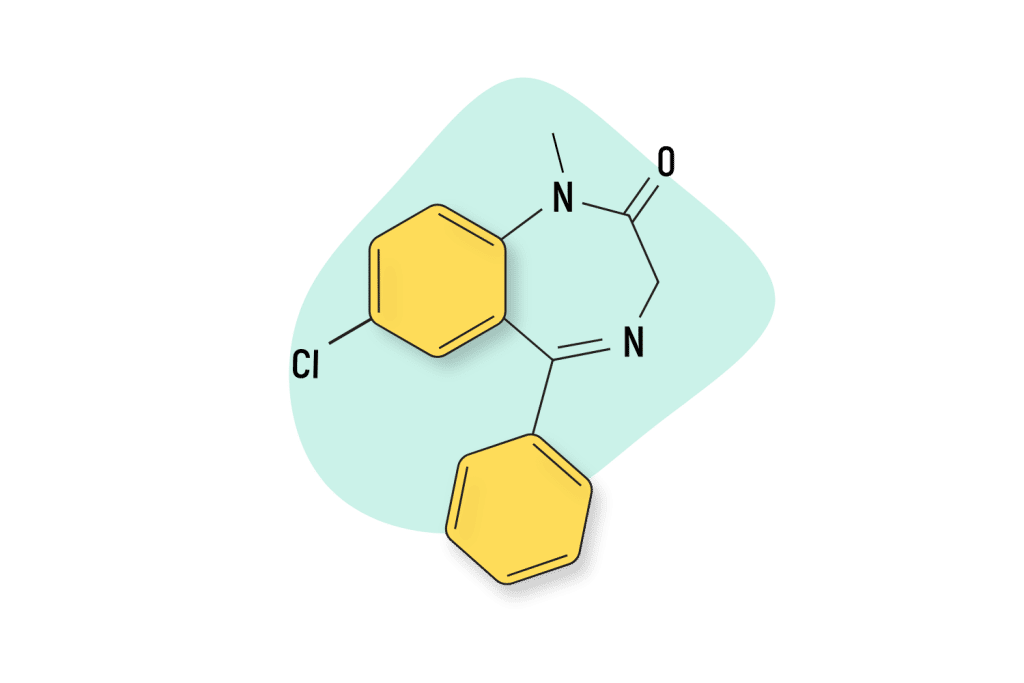
Oxazolam
Oxazolam belongs to a different benzodiazepine subclass, the oxazolobenzodiazepines, but it has a lot in common with clorazepate. Mainly, both compounds are prodrugs for nordiazepam, which is responsible for the bulk of their pharmacological effects. However, unlike clorazepate, oxazolam was never brought to market.
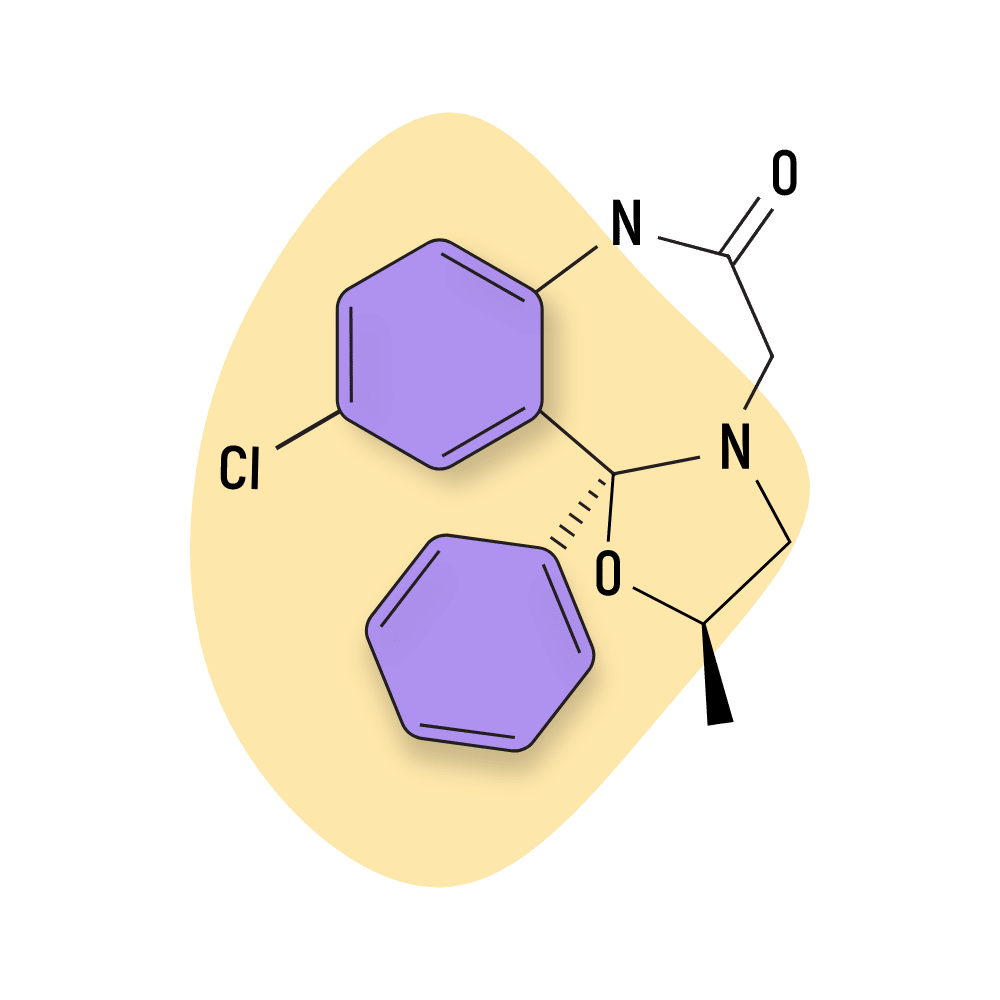
Natural Alternatives to Benzodiazepines
The market for natural benzodiazepine alternatives has exploded in recent years due to the growing awareness of the risks associated with prescription drugs. In this sense, here are some popular compounds.
The Kava Plant
Kava (Piper methysticum) is a tropical plant species with scientifically recognized anxiolytic and sedative benefits [4]. The WHO has recently come out in favor of kava for its proven effectiveness and its ability to cause fewer side effects than pharmacological benzodiazepines. The major problem with kava is it cannot substitute all of the attributes of benzodiazepines, like their hypnotic or muscle-relaxant properties.

The Kratom Plant
Kratom (Mitragyna speciosa) is another fantastic natural alternative. Compared with kava, its most significant attribute is its extensive breadth of pharmacological benefits. When used in low doses, it acts as a stimulant and a euphoric, while in mid-to-high doses, it takes on anxiolytic and sedative effects [5].

Clorazepate FAQs
What are the protein binding values of clorazepate?
The protein binding of clorazepate’s byproduct nordiazepam, which is the pharmacologically significant compound, is high (97-98%)
What formulations is chlordiazepoxide available in
In the United States and Canada, clorazepate is available in 3.75, 7.5, and 15 mg capsules or tablets. In Europe, tablet formations are 5 mg, 10 mg, 20 mg, and 50 mg.
It also bears mentioning that clorazepate is available in a controlled-release formulation (Clorazepate SD). This formulation is thought to reduce the rate of side effects.
References
- Raihle, J. A., & Papendick, V. E. (1975). Clorazepate dipotassium. In Analytical Profiles of Drug Substances (Vol. 4, pp. 91-112). Academic Press.
- Riss, J., Cloyd, J., Gates, J., & Collins, S. (2008). Benzodiazepines in epilepsy: pharmacology and pharmacokinetics. Acta neurologica scandinavica, 118(2), 69-86.
- Tansella, M., Tansella, C. Z., Ferrario, L., Preziati, L., Tognoni, G., & Lader, M. (1978). Plasma concentrations of diazepam, nordiazepam, and amylobarbitone after short-term treatment of anxious patients. Pharmacopsychiatry, 11(02), 68-75.
- Pittler, M. H., & Ernst, E. (2003). Kava extract for treating anxiety. Cochrane Depression, Anxiety and Neurosis Group. Cochrane Database Syst Rev, 3.
- Eastlack, S. C., Cornett, E. M., & Kaye, A. D. (2020). Kratom—Pharmacology, clinical implications, and outlook: a comprehensive review. Pain and therapy, 9(1), 55-69.

